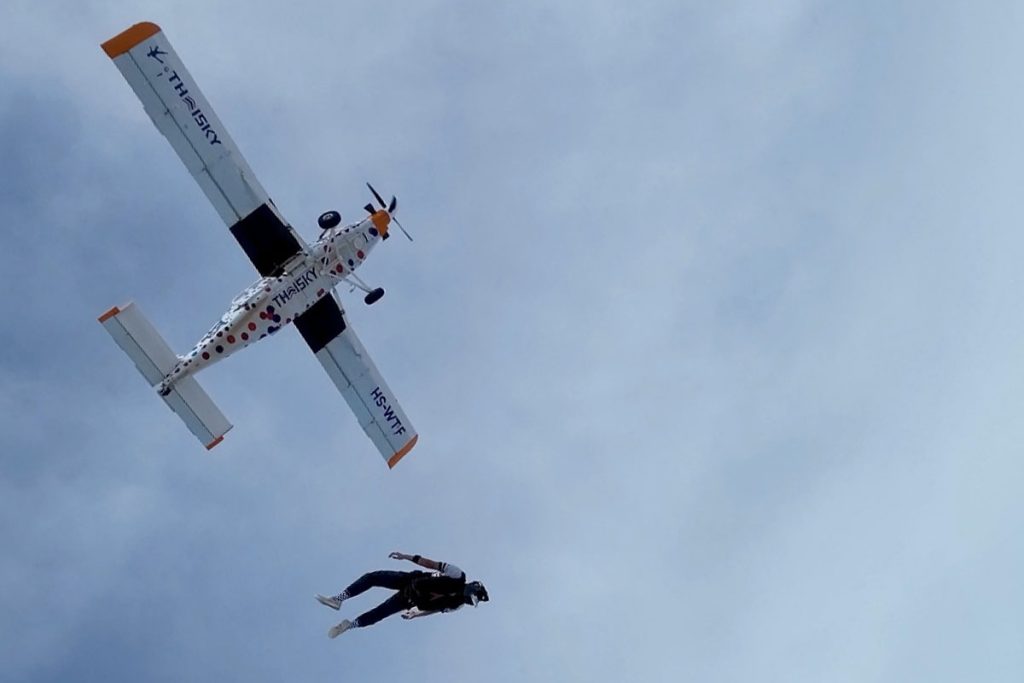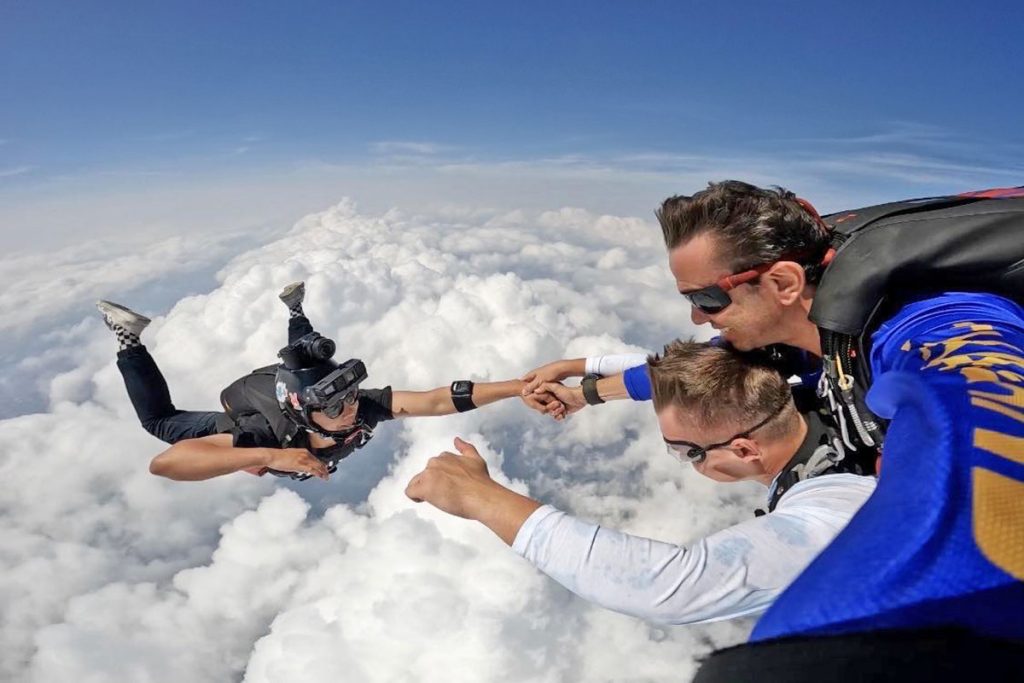When you picture your first tandem skydive, you probably imagine blue skies, light winds and clear views stretching all the way to the horizon. And while that’s often what you’ll get, skydiving is an activity where nature gets the final say. Because your jump involves both a plane and a parachute, the weather plays a huge role in whether or not it’s safe to go ahead. That’s why skydiving companies rely on real time weather data and aviation standards to decide if the day’s conditions are suitable.
What might feel like just a cloudy or breezy day on the ground can be very different up at altitude. The air behaves differently at 10,000 to 14,000 feet, and a perfectly calm beach morning can still bring upper level winds strong enough to postpone your jump. But understanding why these decisions are made helps make the wait a little easier. Safety comes first in this sport, and sometimes that means swapping excitement now for an even better experience just a few hours, or if needed days later.
Rain, Storms and Why Wet Skies Can’t Fly
Rain may seem like a mild inconvenience when you’re planning a beach trip or a hike, but for skydiving, it’s a hard no. And it’s not just about getting a little damp as freefalling at over 200 km/h means that each raindrop feels more like being hit with a pebble. It can actually sting your skin, leaving little red marks and turning the fun of the fall into an uncomfortable ride.
Thunderstorms bring even more serious complications and the presence of lightning, turbulence and rapidly changing wind directions makes them a complete non-starter for any aircraft activity, especially one involving jumpers. It’s not just about the jump itself either as planes need a safe route for ascent and descent, and storms can quickly close those options off.
Local tropical weather patterns can shift throughout the day, and a rain forecast doesn’t necessarily mean your jump is cancelled. You might simply be moved to a later time when conditions improve. Our skydive teams keep a close eye on multiple forecasts and radar tools to make informed decisions and update you quickly if plans change.
Clouds Aren’t Always as Soft as They Look
We tend to think of clouds as harmless puffs of cotton in the sky, but they can seriously limit a pilot’s visibility and yours! While fluffy, high altitude clouds can look incredible in a skydive video, solid or low hanging cloud cover can make it impossible for jumpers to see the ground, instructors to assess the landing area or pilots to navigate safely.
Visibility is a major safety concern and there are strict rules about when and where jumps can happen in cloudy conditions. Depending on the type and thickness of the cloud, jumps may either need to be delayed or rerouted. Although when conditions allow it, jumping above or between high clouds can be stunning. The contrast between the soft white clouds and the blue sky adds an extra visual dimension to your dive. So while clouds might seem like bad news, sometimes they just become part of the scenery.



Wind Can Still Call the Shots
Even when the skies are crystal clear, wind can have the final say. Strong or gusty winds at altitude can interfere with the stability of your parachute, while heavy ground winds can make the landing more difficult than it should be. Wind direction and speed are critical for skydiving, and the instructor needs to guide the parachute to the designated landing zone, and heavy crosswinds can make that tricky. And that’s why your skydive may be paused or moved to a different time of day when the wind is expected to settle.
Why Good Communication Makes All the Difference
When the weather throws a curveball, the key to keeping the experience enjoyable is clear and timely communication. While most people understand that skydiving depends on the weather, what can be frustrating is not knowing what’s going on. That’s why it’s a priority to stay in touch with you if conditions start to change.
Nobody wants to spend the day waiting around with no updates, and good teams will give you as much notice as possible, let you know if your jump might be pushed back or moved to another time slot. Weather delays aren’t a cancellation of the experience, they’re simply a pause to make sure everything goes right.
The Sky Will Wait for You
Skydiving is one of those rare experiences that stays with you long after your feet are back on the ground. While the weather plays a big part in when and how you take that leap, it’s all part of the journey. By trusting your instructors and staying open to rescheduling if needed, you’re giving yourself the best chance at a safe, smooth and unforgettable jump.

